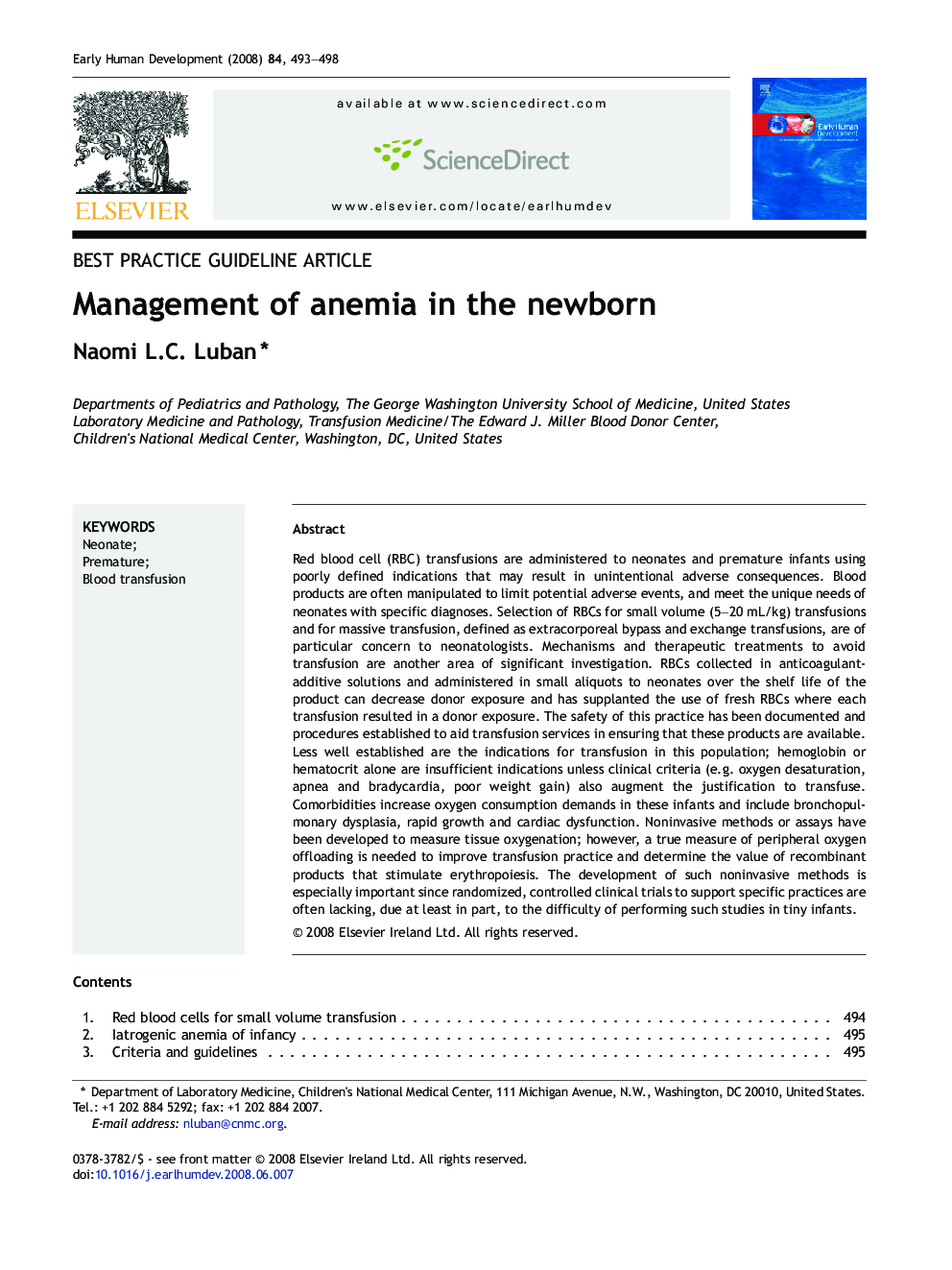| Article ID | Journal | Published Year | Pages | File Type |
|---|---|---|---|---|
| 3918187 | Early Human Development | 2008 | 6 Pages |
Red blood cell (RBC) transfusions are administered to neonates and premature infants using poorly defined indications that may result in unintentional adverse consequences. Blood products are often manipulated to limit potential adverse events, and meet the unique needs of neonates with specific diagnoses. Selection of RBCs for small volume (5–20 mL/kg) transfusions and for massive transfusion, defined as extracorporeal bypass and exchange transfusions, are of particular concern to neonatologists. Mechanisms and therapeutic treatments to avoid transfusion are another area of significant investigation. RBCs collected in anticoagulant-additive solutions and administered in small aliquots to neonates over the shelf life of the product can decrease donor exposure and has supplanted the use of fresh RBCs where each transfusion resulted in a donor exposure. The safety of this practice has been documented and procedures established to aid transfusion services in ensuring that these products are available. Less well established are the indications for transfusion in this population; hemoglobin or hematocrit alone are insufficient indications unless clinical criteria (e.g. oxygen desaturation, apnea and bradycardia, poor weight gain) also augment the justification to transfuse. Comorbidities increase oxygen consumption demands in these infants and include bronchopulmonary dysplasia, rapid growth and cardiac dysfunction. Noninvasive methods or assays have been developed to measure tissue oxygenation; however, a true measure of peripheral oxygen offloading is needed to improve transfusion practice and determine the value of recombinant products that stimulate erythropoiesis. The development of such noninvasive methods is especially important since randomized, controlled clinical trials to support specific practices are often lacking, due at least in part, to the difficulty of performing such studies in tiny infants.
